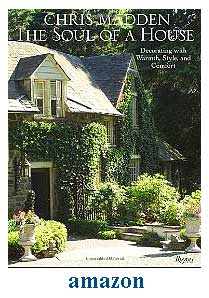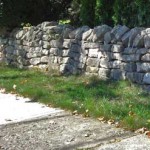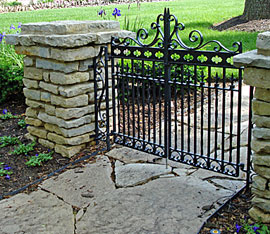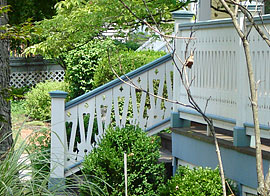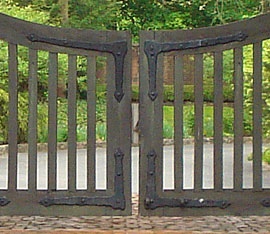Discover the architectural style of your house. Carry it into the architectural detailing and features of outdoor projects and outdoor furnishings.

Georgian style home. Love the third floor dormers!
Do you know the architectural style of your house? As a homeowner, you probably can look back at the time when you were in search of the perfect, or not so perfect, house to call your own. And you seemed instinctively to know when you had found it. Recognizing all its potential, hundreds of ideas began to race through your mind as to how you would renovate or redecorate every nook and cranny of your newly found property, and stamp it with your own style.
Looking beyond those nooks and crannies at the bigger picture, that is the house itself, we can see another style. That is, the architectural style of the house. No matter how modest or how grand a house may be, each possesses an architectural style, whether as a pure original (as a house that may be centuries old), an eclectic (where several classic styles may have been combined), or a distant adaptation.
Quite possibly it is a particular architectural style that draws us to a house in the first place, even though we may not be able to identify the style. It may remind us of the style of house we grew up in, or we may like it because it is a completely different style than that. Or simply, perhaps we just like its appearance and that is all the ‘information’ we need!
Since the 1600’s when the earliest settlers began to form new colonies and make their homes along the eastern seaboard, houses have undergone numerous periods of evolving architectural styles, or fashion. Modest structures with little or no architectural style or detail were built for the basic necessity of shelter. Over the following centuries as more and more people came, mostly from Europe, and settled in North America, the cities and towns of the colonies grew and prospered. And in these settlements, with the influx of new arrivals, came the architectural influences of Europe. An architectural style, such as, the Italian renaissance style (circa 15th century) gradually spread through Europe from Italy to France to England, and then, gradually to North America (in the 18th century). As a style made its way across the continents, each country gave their own expression and traits to that style. Sometimes these traits or variations were due to the availability of local materials. The local or regional climate played a part in its appearance, too.
There are many period houses of America’s early centuries that have survived over time. Many houses of the ‘revival’ style of the late 1800’s and early 1900’s still grace America’s oldest neighborhoods. In the mid 1900’s, neighborhoods of eclectic style houses with very minimal detailing were built, followed later by the modern style period. In more recent years, a return to traditional classic architecture with authenticity in form and detailing has become popular.
You may find it very beneficial to identify the architectural style of your house, so that you can build on that style as you plan projects for your house, and your outdoor areas. This can be done by using architectural design features and details, construction materials, and accessories that are in character with and true to the house’s architectural style. This is one of the ways in which value may be added to a residential property.
As a starting place for identifying the architectural period of your house, it may be a good idea to research the year the house was built. That will place it in a specific time frame and then, through the process of elimination, you can narrow the search. Deeds usually have the date the house was built, but sometimes this information is incorrect. For instance, if a house had a renovation or an addition to it, the deed may have had its original built date replaced with the date of the renovation/addition which would be inaccurate record keeping. If a situation arises that would make you question the ‘built date’ (especially if the neighboring houses reflect a very different built date than yours), you may want to do further research.
Location of a home will also be informative. For instance, an original Dutch Colonial would only have been built in the specific location of New York state (along the Hudson River), through some of New Jersey and Delaware. So if you have a Dutch Colonial house in Indiana, it would not be an original, but may be a Dutch Colonial Revival, built during the Colonial Revival period (late 1800’s – early to mid 1900’s).
Check out our article on house styles for different architectural styles and their typical features. These features can help you identify the architectural style of your house. There are many books and guides available (we like – A Field Guide to American Houses by Virginia McAlester), whether for general interest purposes, or for a more in depth venture into the many architectural styles and periods of the American house, and the houses of other countries, too.






